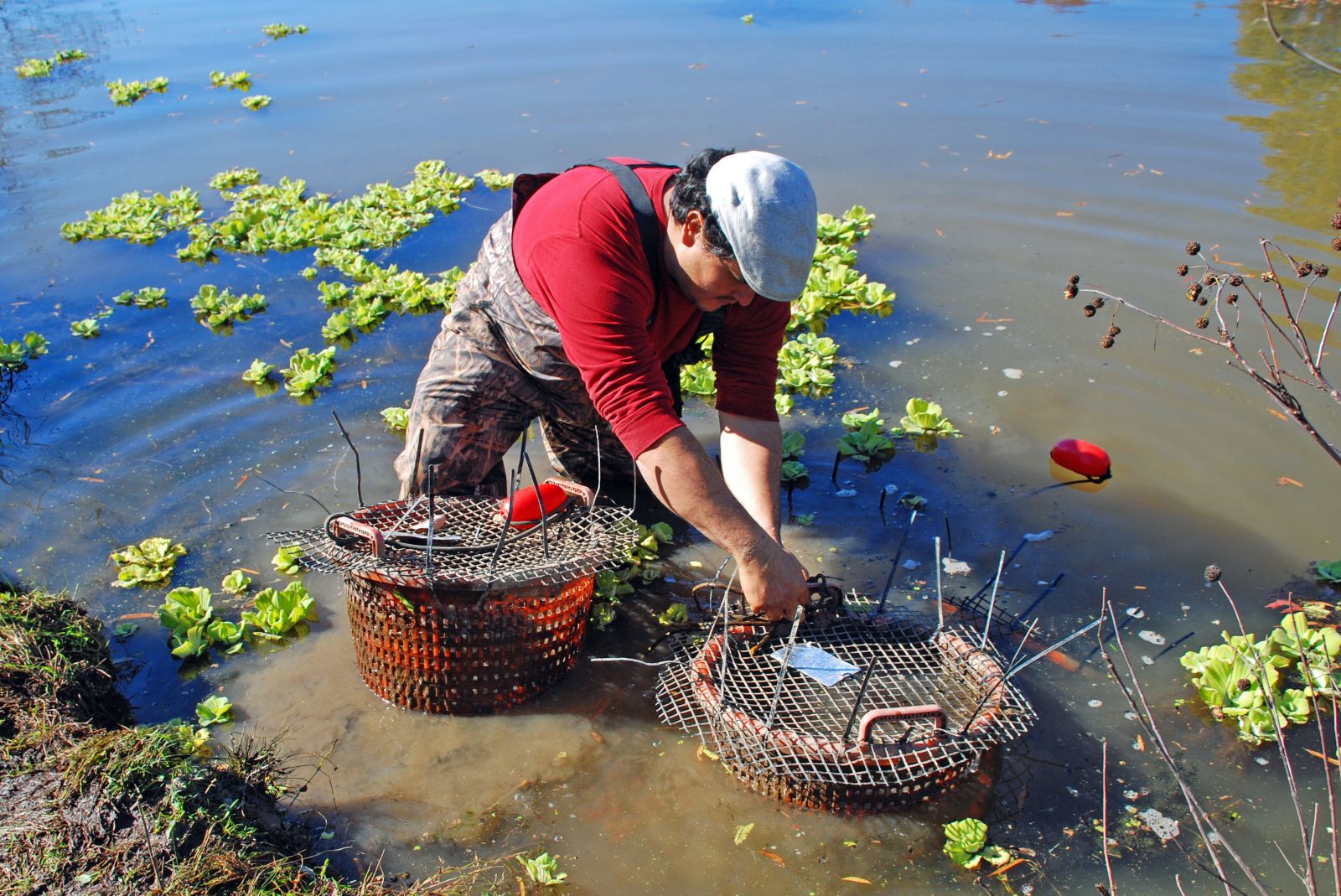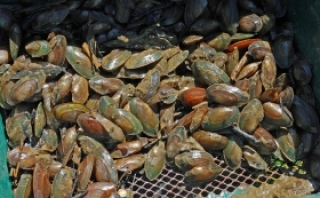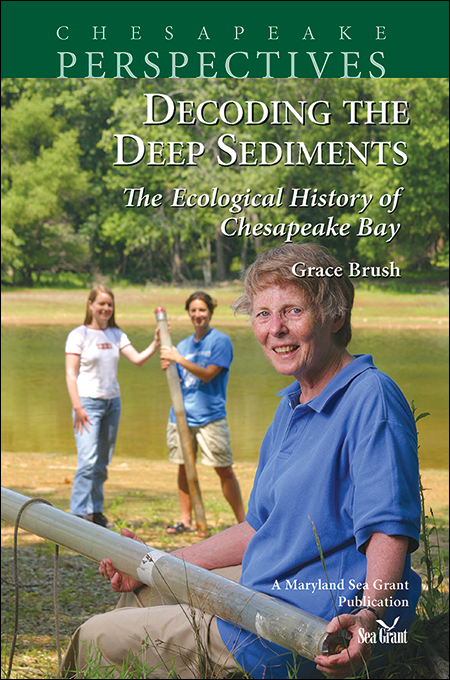Knauss legislative fellowships in Congress help build careers — and they're fun and educational. See our video and fact sheet for details.
A Mussel’s Muscles: Can another bivalve help save the bay?
You may have heard people say oysters were once able to filter the whole Chesapeake Bay in three days. Though that is merely a figure of speech, oysters have long been known to filter bodies of water. But there is another type of bivalve mollusk that is known to provide the same service, and is gaining in popularity in fresher water. The mussel is that particular mollusk. Mussel species are being used in many bodies of water — the Anacostia River and its tributaries among them —to provide ecosystem services. The Delaware River is also trying them to help clean its waters. But what in particular gives mussels the capability to filter water? Where do they work best? Where else might they be planted? I am looking at these questions for Maryland Sea Grant, and over the next year, I plan to write some articles here that help provide answers and context.
Flexing Our Mussels
These Bay-cleaning mussels are not the kinds you eat with a white wine sauce at your favorite restaurant. (More on that in a later post). But they, like all mussels, filter water to breathe, feed, and grow. The bivalve mollusks bring in water through one siphon, filter-feed with their gills, and release water and waste through the other siphon. Mussels, using their adductor muscles, can open and close their shells (valves) when they want to use them. They can feed themselves by filtering plankton and various nutrients, such as nitrogen and phosphorus, out of the water that surrounds them. That’s one major reason mussels are growing in popularity.
Some adult mussel species, like the Eastern pondmussel (Ligumia nasuta), can filter up to 20 gallons of water a day. But their bivalve mollusk counterparts, oysters, are known to filter upwards of 50 gallons of water a day, with a minimum for a two-inch oyster being 20 gallons. With those numbers, it may seem absurd that mussels are even competitive with oysters, but mussels can be more successful than their fellow filter-feeders in different habitats. Put simply, a mussel can go where no oyster has gone before, or where none could live now. Oysters can be a solution, in other words, but they cannot be the solution everywhere.
The Right Bivalve in the Right Place

The Anacostia Watershed Society’s Jorge Montero transfers mussels from the river to Kenilworth Aquatic Gardens, where they will overwinter. Photo, Gregg Trilling
Mussels, though they have a smaller capacity to filter water, may be more resilient than oysters in some circumstances. Mussel rafts have survived hurricanes, while those who grow oysters have shared stories about the destruction of their oyster beds during heavy rains due to both low-salinity conditions and wave action that tosses floats and cages. That’s expensive equipment that they can’t always retrieve again. Mussels are also more adaptable to a wide range of salinity. One example is the case of the mussel species Mytilus edulis, which is able to survive salinities as low as 4 parts per thousand (ppt), while also surviving at salinities upwards of 26 ppt, according to the UK Marine Special Areas of Conservation Project.
To give a range of what that looks like on a Bay-wide scale, this species of mussel could survive in the fresh waters of Baltimore’s Inner Harbor (where salinity is around 3 ppt, according to condition reports from Baltimore Harbor Water Alert) as well as the harsh salty conditions of the Coastal Bays around Ocean City (at around 24 ppt, a more common location for oysters, or clams, another bivalve that loves its salt). It is common to see oysters placed into the brackish waters of the Chesapeake, even though oysters are saltwater organisms. They typically require 8 ppt salt at a minimum. Nonprofit groups, including The Chesapeake Bay Foundation, are planting millions of oysters in the Inner Harbor and near it, hoping to repopulate the Chesapeake with a keystone species now at less than one percent of its historic levels. The groups also consider it an education opportunity, and a chance to involve multiple volunteers in a “save the Bay” effort. But some scientists have questioned whether the mussel might be the better bivalve for this task, especially as salinities at the Inner Harbor dropped recently due to the deluge of rain. Certainly, freshwater harbors are looking at this question, and mussels have come to the waters around Philadelphia and Washington, D.C. Conservation groups, including Anacostia Watershed Society, have planted them in hopes they will help to clean up the waterways. Mussels also show up naturally in some places, such as the Magothy River north of Annapolis, where they clean the water but also create some nuisances for boat owners and a potential hazard for pets that digest them.
In addition to their resilience and adaptability, mussel “seed” (baby mussels, or larvae) is plentiful in our waters, which means mussels are more likely to grow.
Another benefit of mussel rafts is they attract biodiversity that is sought after by conservation groups. Since American oyster reefs have widely reduced in size throughout the years, it is likely that their capacity to attract as much biodiversity is much lower than it used to be. In contrast, where mussel rafts grow, one can also find a high quantity of various fish species who are using the rafts as habitat. Planting and growing mussels is an act of conservation in itself — and their function as filter-feeding organisms that attract biodiversity gives them an even greater conservation value.
Mussel memory
But the use of mussels as a means to save the Chesapeake Bay is not without tradeoffs. Mussels use oxygen as they filter, and in some cases, that means lowered dissolved oxygen levels in the bodies of water in which they grow. However, if they are able to support a biodiverse community, the various plants and plankton living with them can offset the oxygen use. There is yet another downside in the way that mussels work: The nutrients and food that they filter are never really gone. Call it muscle memory for mussels. It is merely relocated into their body tissues. And that reinforces another issue: while bivalves are great with clean-up, prevention of nutrient build-up and pollution will always be a better option than cleaning up the damage afterwards.
For more information on mussels, see Chesapeake Quarterly’s Mussel Power issue.
Photo, top left: Mussels get ready to overwinter in Kenilworth Gardens. They will return to the Anacostia in the spring. Credit: Gregg Trilling
See all posts from the On the Bay blog





